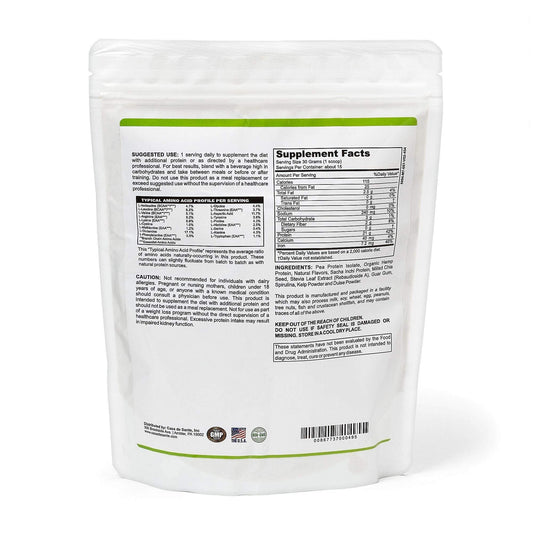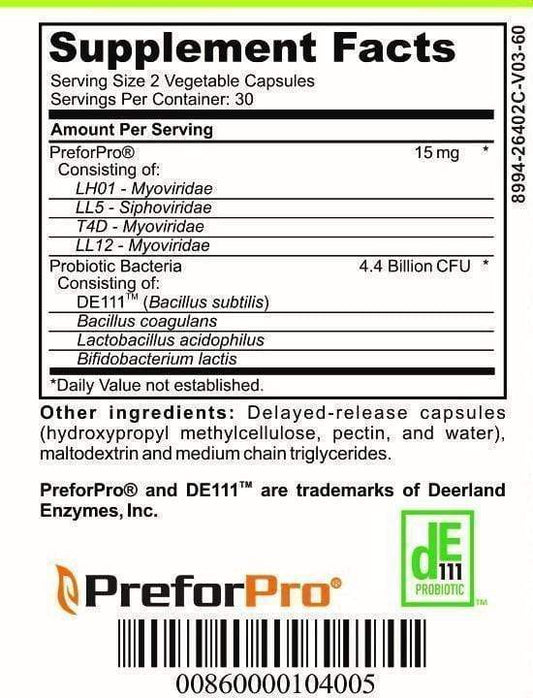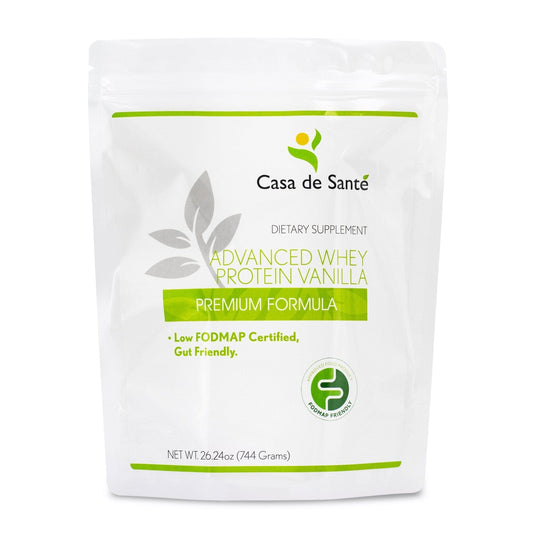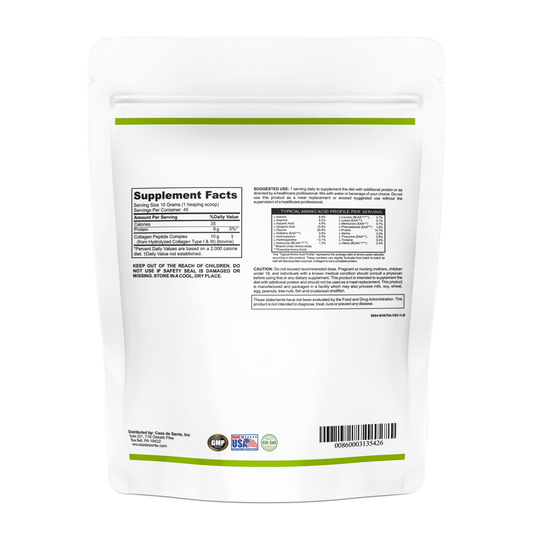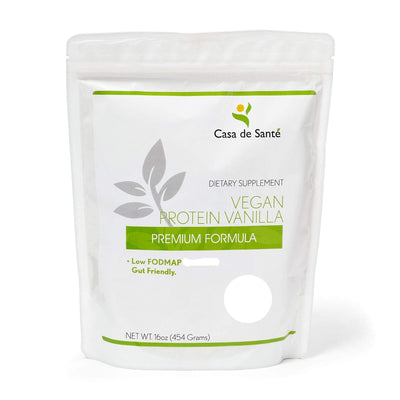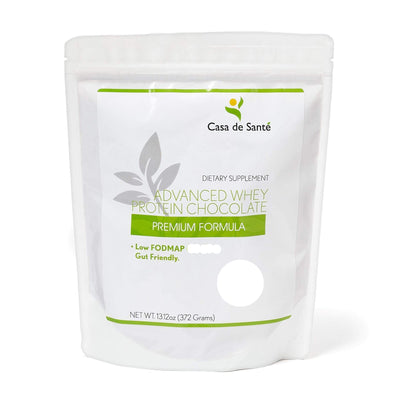Is Brown Rice Flour Gluten Free
Is Brown Rice Flour Gluten Free
Gluten has become a buzzword in recent years, with more and more people adopting a gluten-free lifestyle. If you are considering a gluten-free diet or have been diagnosed with celiac disease, you might be wondering if brown rice flour is a suitable option for you. In this article, we will delve into the world of gluten, explore the basics of brown rice flour, analyze its gluten content, and discover the benefits of incorporating it into a gluten-free diet.
Understanding Gluten and Its Effects
Before we delve into the specifics of brown rice flour, it is essential to understand what gluten is and how it affects the body.
Gluten is a protein found in grains such as wheat, barley, and rye. It is composed of two main proteins, glutenin and gliadin. When mixed with water, gluten gives dough its elasticity, allowing it to rise and maintain its shape during baking.
Gluten has become a hot topic in recent years, with many people opting for gluten-free diets. But why is gluten such a concern for some individuals?
What is Gluten?
As mentioned earlier, gluten is a protein found in grains. It is responsible for the chewy texture of bread and the stretchiness of pizza dough. In addition to its role in baking, gluten is also used as a stabilizing agent in various processed foods.
Gluten is not inherently bad for everyone. In fact, most people can consume gluten without any issues. However, for individuals with celiac disease or gluten sensitivity, gluten can wreak havoc on their bodies.
How Gluten Affects the Body
For individuals with celiac disease or gluten sensitivity, consuming gluten can trigger an immune response that damages the lining of the small intestine. This immune reaction is triggered by the presence of gluten in the digestive system.
When gluten is ingested, the immune system mistakenly identifies it as a threat and launches an attack. This attack damages the villi, which are tiny finger-like projections that line the small intestine. These villi play a crucial role in nutrient absorption, so when they are damaged, the body struggles to absorb essential nutrients.
The damage to the small intestine can lead to various symptoms, including abdominal pain, diarrhea, bloating, and fatigue. In some cases, individuals may also experience weight loss, nutrient deficiencies, and even neurological symptoms.
To avoid these reactions, a strict gluten-free diet is necessary. This means avoiding all sources of gluten, including foods that may have been cross-contaminated with gluten during processing.
It's important to note that gluten sensitivity is different from celiac disease. While celiac disease is an autoimmune disorder, gluten sensitivity is a less severe condition that does not involve an immune response. However, both conditions require a gluten-free diet to manage symptoms.
In recent years, the demand for gluten-free products has skyrocketed, leading to a wide range of gluten-free alternatives in the market. Brown rice flour is one such alternative that has gained popularity among those following a gluten-free diet.
Now that we have a better understanding of gluten and its effects on the body, let's explore the specifics of brown rice flour and how it can be used as a gluten-free alternative in baking.
The Basics of Brown Rice Flour
Brown rice flour is a gluten-free alternative that has gained popularity in recent years. It is made by grinding whole brown rice grains into a fine powder. Let's explore the production process of brown rice flour and its nutritional profile.
The Production Process of Brown Rice Flour
The production process of brown rice flour involves removing the outer hull of the rice grain and milling it to a fine consistency. This process starts with carefully selecting high-quality brown rice grains. The grains are thoroughly cleaned to remove any impurities or foreign particles. Once cleaned, the outer hull, which is inedible and tough, is removed using a milling machine.
After the hull is removed, the brown rice grains are carefully inspected to ensure that no hull fragments remain. The grains are then sent through a series of grinding machines to break them down into a fine powder. The grinding process is done slowly and carefully to maintain the integrity of the grains and prevent overheating, which could affect the nutritional value of the flour.
Unlike white rice flour, which is made from polished white rice grains, brown rice flour retains the bran and germ, making it more nutritious. The bran and germ are rich in fiber, vitamins, and minerals, which are essential for a healthy diet. By keeping these components intact, brown rice flour offers a more wholesome and nutrient-dense alternative to traditional wheat flour.
Nutritional Profile of Brown Rice Flour
Brown rice flour is a rich source of essential nutrients. It is high in fiber, which promotes healthy digestion and helps regulate blood sugar levels. The fiber content in brown rice flour also aids in weight management by providing a feeling of fullness and reducing cravings.
In addition to fiber, brown rice flour contains a variety of vitamins and minerals that are beneficial for overall health. It is particularly high in magnesium, a mineral that plays a crucial role in numerous bodily functions, including nerve function, muscle contraction, and maintaining a healthy immune system. Brown rice flour also provides manganese, which is essential for bone health and metabolism, as well as phosphorus, which is important for strong bones and teeth.
Furthermore, brown rice flour is a good source of antioxidants, which help protect the body against harmful free radicals. These antioxidants, such as phenolic compounds and flavonoids, have been linked to a reduced risk of chronic diseases, including heart disease and certain types of cancer.
In conclusion, brown rice flour is a versatile and nutritious gluten-free alternative. Its production process involves carefully milling whole brown rice grains, retaining the bran and germ for added nutritional value. With its high fiber content and abundance of vitamins, minerals, and antioxidants, brown rice flour is a valuable addition to a healthy diet.
Gluten Content in Various Types of Flour
To determine if brown rice flour is truly gluten-free, it is essential to compare its gluten content with that of other commonly used flours.
Wheat Flour and Gluten
Wheat flour is notorious for its high gluten content. Gluten, a protein found in wheat, barley, and rye, is responsible for the elasticity and structure of dough. However, it is not suitable for individuals following a gluten-free diet or those with celiac disease or gluten sensitivity. Consuming wheat flour can lead to digestive issues and other adverse reactions in these individuals.
Gluten sensitivity, also known as non-celiac gluten sensitivity, is a condition where individuals experience symptoms similar to those with celiac disease but without the same immune response. These symptoms may include bloating, diarrhea, fatigue, and headaches. Therefore, it is crucial for individuals with gluten sensitivity to avoid wheat flour and other gluten-containing products.
Alternative Gluten-Free Flours
Fortunately, there are several gluten-free flour options available. These flours provide viable alternatives for individuals who need to avoid gluten.
Almond flour, made from ground almonds, is a popular choice among those following a gluten-free diet. It has a slightly sweet and nutty flavor and is rich in protein, healthy fats, and vitamin E.
Coconut flour, made from dried coconut meat, is another excellent gluten-free option. It is high in fiber, low in carbohydrates, and adds a subtle coconut flavor to baked goods.
Quinoa flour, derived from ground quinoa seeds, is a nutritious gluten-free flour. Quinoa is a complete protein, containing all essential amino acids, making it an excellent choice for individuals looking to increase their protein intake while avoiding gluten.
And of course, there is brown rice flour. Made from finely ground brown rice, it is a staple in gluten-free baking. Brown rice flour has a mild, slightly nutty flavor and works well in a variety of recipes, including bread, cookies, and pancakes.
When comparing the gluten content of these alternative flours to brown rice flour, it is important to note that they are all naturally gluten-free. However, cross-contamination can occur during processing or packaging, so it is essential to look for certified gluten-free labels to ensure the absence of gluten.
Overall, individuals who need to avoid gluten have a range of options when it comes to flour choices. Whether it's almond flour, coconut flour, quinoa flour, or brown rice flour, these alternatives provide delicious and nutritious options for gluten-free baking and cooking.
Is Brown Rice Flour a Gluten-Free Option?
Now that we understand gluten and have explored the basics of brown rice flour, let's analyze the gluten content in brown rice flour and why it is suitable for a gluten-free diet.
Analyzing the Gluten Content in Brown Rice Flour
Brown rice flour is naturally gluten-free. As it is derived from rice, which does not contain gluten, it is safe for individuals with celiac disease or gluten sensitivity.
When it comes to gluten-free options, brown rice flour stands out as a reliable choice. It undergoes a meticulous production process that ensures the absence of any gluten contamination. This makes it a trustworthy ingredient for those who need to strictly avoid gluten in their diet.
Furthermore, brown rice flour is often tested for gluten content to meet the gluten-free certification standards. This additional step provides an extra layer of assurance for individuals with gluten-related conditions.
Why Brown Rice Flour is Suitable for a Gluten-Free Diet
In addition to being gluten-free, brown rice flour offers numerous benefits for individuals following a gluten-free diet. It has a mild, slightly nutty flavor that works well in both sweet and savory recipes.
Imagine biting into a delicious slice of gluten-free bread or enjoying a moist gluten-free cake. With brown rice flour, these culinary delights become a reality. Its fine texture and subtle taste make it an excellent choice for baking, ensuring that your gluten-free creations turn out just as delectable as their gluten-filled counterparts.
Not only is brown rice flour versatile in the kitchen, but it also boasts an impressive nutritional profile. It contains essential vitamins and minerals, such as iron, magnesium, and B vitamins, which are often lacking in gluten-free diets. Additionally, it is a good source of dietary fiber, promoting digestive health and providing a feeling of satiety.
For those concerned about maintaining a balanced diet while avoiding gluten, brown rice flour can be a valuable ally. Its nutritional benefits make it a suitable substitute for wheat flour in various recipes, ensuring that you don't miss out on essential nutrients.
Whether you are baking bread, making pancakes, or preparing a hearty casserole, brown rice flour is a reliable and nutritious choice for your gluten-free needs.
Incorporating Brown Rice Flour into a Gluten-Free Diet
Now that we have established that brown rice flour is gluten-free and beneficial, let's explore how you can incorporate it into your gluten-free diet.
Benefits of Using Brown Rice Flour
One of the prominent benefits of using brown rice flour is its versatility. It can be used as a one-to-one substitute for wheat flour in most recipes, including bread, cakes, cookies, and pancakes. Additionally, brown rice flour adds a unique flavor and texture to gluten-free baked goods.
Delicious Gluten-Free Recipes with Brown Rice Flour
To get you started on your gluten-free baking journey, here are a few delicious recipes that feature brown rice flour:
- Gluten-Free Brown Rice Flour Bread
- Chocolate Chip Cookies with Brown Rice Flour
- Brown Rice Flour Pancakes
- Banana Bread made with Brown Rice Flour
These recipes showcase the versatility and deliciousness of brown rice flour in gluten-free cooking.
In conclusion, brown rice flour is indeed a gluten-free option for individuals with celiac disease or gluten sensitivity. Its natural gluten-free status, combined with its nutritional profile and versatility, makes it an excellent choice for those looking to follow a gluten-free diet. So, go ahead and discover the wonders of brown rice flour in your gluten-free recipes!


